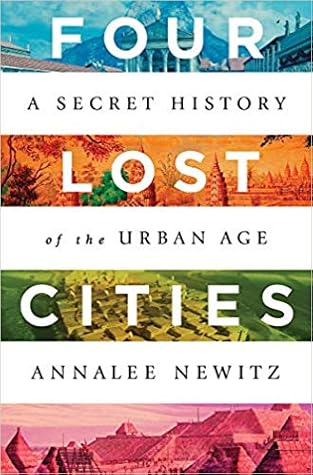More on this book
Community
Kindle Notes & Highlights
Read between
January 29 - May 3, 2022
Roughly 12,000 years ago, seminomadic peoples created an incredible structure on the summit of a high plateau known today as Gobekli Tepe. Located about 300 kilometers east of Çatalhöyük, the site is populated with over 200 T-shaped stone pillars, some towering 5.5 meters high. It’s slightly reminiscent of Stonehenge, but far more elaborate. The pillars are crawling with reliefs and carvings of wild animals, many of them dangerous or poisonous.
Perhaps because it was so terrifying, the eruption became an event that people seemed to want to erase from history. When I asked street expert Eric Poehler about it, he marveled at how almost nothing is said about such a major event in the Roman world. But he said it became less mysterious to him after he learned about the idea, taken from 20th-century history, of a “generation of silence” that comes in the wake of disaster. A similar kind of cultural silence followed the Spanish Flu pandemic of 1919, which slaughtered over 675,000 Americans in a matter of months—more than had died during all
...more
indeed, slave-owning societies all the way up into the 19th century often depended largely on their workers to generate wealth. Sociologist Matthew Desmond, writing about slave labor in the US South, has noted that by the time the Civil War started, “the combined value of enslaved people exceeded that of all the railroads and factories in the nation.”7
Angkor isn’t a lost civilization; it’s the living legacy of ordinary people who refused to give up.
Cahokians designed their city to reflect a fascination with astronomy. People at Cahokia tracked the movements of the stars, moon, and sun, often orienting their homes to the positions of these cosmic bodies in the sky. During the city’s biggest population expansion, its street grid was aligned to be exactly 5 degrees off the north-south axis. Pauketat and his colleagues believe it is oriented toward an astronomical phenomenon called the lunar standstill,13 during which the moon’s altitude in the night sky rises and falls dramatically during a two-week period.
The city’s boom years may have been jump-started by an even more astounding astronomical event. In 1054, just as the city was growing, a supernova lit up the sky for almost a month. It was so bright that it would have been visible during the day and as luminous as the full moon at night. We have records of this event across the world, from scrolls authored in China, to paintings on the walls of Chaco Canyon in New Mexico, where another indigenous urban civilization was booming. Pauketat believes it’s possible that an enterprising group of religious or political leaders took the supernova as a
...more
Were people at the BBB Motor Site offering tribute or a food tax to elites who lived on top of Monks Mound? I decided to pose this question to some archaeologists in the best place to talk about Cahokia’s history: a pub in Edwardsville, Illinois, called The Stagger Inn. Founded by an archaeologist, it’s known to Cahokia researchers simply as “the archaeologist’s bar.” Every Thursday, people working the digs all over Cahokia converge on the place for beer, hamburgers, and delicious fries.


